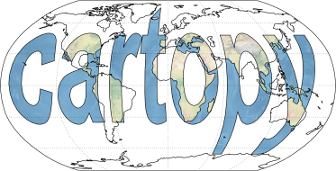# Copyright Crown and Cartopy Contributors
#
# This file is part of Cartopy and is released under the BSD 3-clause license.
# See LICENSE in the root of the repository for full licensing details.
"""
Extra functionality that is primarily intended for developers, providing support for
transforming between Shapely geometries and Matplotlib paths.
See also `Shapely Geometric Objects
<https://shapely.readthedocs.io/en/latest/manual.html#geometric-objects>`_
and `Matplotlib Path API <https://matplotlib.org/stable/api/path_api.html>`_.
"""
from matplotlib.path import Path
import numpy as np
import shapely.geometry as sgeom
from cartopy.mpl import _MPL_38
def _ensure_path_closed(path):
"""
Method to ensure that a path contains only closed sub-paths.
Parameters
----------
path
A :class:`matplotlib.path.Path` instance.
Returns
-------
path
A :class:`matplotlib.path.Path` instance with only closed polygons.
"""
# Split path into potential sub-paths and close all polygons
# (explicitly disable path simplification applied in to_polygons)
should_simplify = path.should_simplify
try:
path.should_simplify = False
polygons = path.to_polygons()
finally:
path.should_simplify = should_simplify
codes, vertices = [], []
for poly in polygons:
vertices.extend([poly[0], *poly])
codes.extend([Path.MOVETO, *[Path.LINETO]*(len(poly) - 1), Path.CLOSEPOLY])
return Path(vertices, codes)
def _path_segments(path, **kwargs):
"""
Create an array of vertices and a corresponding array of codes from a
:class:`matplotlib.path.Path`.
Parameters
----------
path
A :class:`matplotlib.path.Path` instance.
Other Parameters
----------------
kwargs
See `matplotlib.path.Path.iter_segments` for details of the keyword
arguments.
Returns
-------
vertices, codes
A (vertices, codes) tuple, where vertices is a numpy array of
coordinates, and codes is a numpy array of matplotlib path codes.
See :class:`matplotlib.path.Path` for information on the types of
codes and their meanings.
"""
pth = path.cleaned(**kwargs)
return pth.vertices[:-1, :], pth.codes[:-1]
[docs]
def shapely_to_path(shape):
"""
Create a :class:`matplotlib.path.Path` object that describes a shape.
Parameters
----------
shape
:class:`shapely.Point`,
:class:`shapely.LineString`,
:class:`shapely.LinearRing`,
:class:`shapely.Polygon`,
:class:`shapely.MultiPoint`,
:class:`shapely.MultiPolygon`,
:class:`shapely.MultiLineString`,
:class:`shapely.GeometryCollection`.
Returns
-------
path
:class:`matplotlib.path.Path`
"""
if shape.is_empty:
return Path(np.empty([0, 2]))
elif isinstance(shape, sgeom.LinearRing):
return Path(np.column_stack(shape.xy), closed=True)
elif isinstance(shape, (sgeom.LineString, sgeom.Point)):
return Path(np.column_stack(shape.xy))
elif isinstance(shape, sgeom.Polygon):
def poly_codes(poly):
codes = np.ones(len(poly.xy[0])) * Path.LINETO
codes[0] = Path.MOVETO
codes[-1] = Path.CLOSEPOLY
return codes
vertices = np.concatenate([np.array(shape.exterior.xy)] +
[np.array(ring.xy) for ring in
shape.interiors], 1).T
codes = np.concatenate([poly_codes(shape.exterior)] +
[poly_codes(ring) for ring in shape.interiors])
return Path(vertices, codes)
elif isinstance(shape, (sgeom.MultiPolygon, sgeom.GeometryCollection,
sgeom.MultiLineString, sgeom.MultiPoint)):
paths = []
for geom in shape.geoms:
path = shapely_to_path(geom)
if _MPL_38 or path.vertices.size > 0:
# make_compound_path handling for empty paths was added at
# https://github.com/matplotlib/matplotlib/pull/25252
paths.append(path)
return Path.make_compound_path(*paths)
else:
raise ValueError(f'Unsupported shape type {type(shape)}.')
[docs]
def path_to_shapely(path):
"""
Create a Shapely geometric object from a :class:`matplotlib.path.Path`.
Parameters
----------
path
A :class:`matplotlib.path.Path` instance.
Returns
-------
One of the following Shapely objects:
:class:`shapely.Polygon`,
:class:`shapely.LineString`
:class:`shapely.Point`,
:class:`shapely.MultiPolygon`
:class:`shapely.MultiLineString`
:class:`shapely.MultiPoint`
:class:`shapely.GeometryCollection`.
"""
# Convert path into numpy array of vertices (and associated codes)
path_verts, path_codes = _path_segments(path, curves=False)
# Split into subarrays such that each subarray consists of connected
# line segments based on the start of each one being marked by a
# matplotlib MOVETO code.
verts_split_inds = np.where(path_codes == Path.MOVETO)[0]
verts_split = np.split(path_verts, verts_split_inds)
codes_split = np.split(path_codes, verts_split_inds)
# Iterate through the vertices generating a list of
# (external_poly, [internal_polygons]) tuples for the polygons and separate
# lists for linestrings and points.
points = []
linestrings = []
polygon_bits = []
for path_verts, path_codes in zip(verts_split, codes_split):
if len(path_verts) == 0:
continue
if path_codes[-1] == Path.CLOSEPOLY:
path_verts[-1, :] = path_verts[0, :]
verts_same_as_first = np.isclose(path_verts[0, :], path_verts[1:, :],
rtol=1e-10, atol=1e-13)
verts_same_as_first = np.logical_and.reduce(verts_same_as_first,
axis=1)
if all(verts_same_as_first):
points.append(sgeom.Point(path_verts[0, :]))
elif not(path_verts.shape[0] > 4 and path_codes[-1] == Path.CLOSEPOLY):
linestrings.append(sgeom.LineString(path_verts))
else:
geom = sgeom.Polygon(path_verts[:-1, :])
# If geom is a Polygon and is contained within the last geom in
# polygon_bits, it usually needs to be an interior to that geom (e.g. a
# lake within a land mass). Sometimes there is a further geom within
# this interior (e.g. an island in a lake, or some instances of
# contours). This needs to be a new external geom in polygon_bits.
if (len(polygon_bits) > 0 and polygon_bits[-1][0].contains(geom.exterior)):
if any(internal.contains(geom) for internal in polygon_bits[-1][1]):
polygon_bits.append((geom, []))
else:
polygon_bits[-1][1].append(geom)
else:
polygon_bits.append((geom, []))
# Convert each (external_polygon, [internal_polygons]) pair into a
# a shapely Polygon that encapsulates the internal polygons.
polygons = []
for external_poly, internal_polys in polygon_bits:
if internal_polys:
exteriors = [geom.exterior for geom in internal_polys]
geom = sgeom.Polygon(external_poly.exterior, exteriors)
else:
geom = external_poly
polygons.append(geom)
# Remove any zero area Polygons
def not_zero_poly(geom):
return (not geom.is_empty and geom.area != 0)
polygons = list(filter(not_zero_poly, polygons))
# Figure out what type of object to return
if not polygons:
if not linestrings:
if not points:
# No geometries. Return an empty point
return sgeom.Point()
elif len(points) > 1:
return sgeom.MultiPoint(points)
else:
return points[0]
elif not points:
if len(linestrings) > 1:
return sgeom.MultiLineString(linestrings)
else:
return linestrings[0]
else:
if not linestrings and not points:
if len(polygons) > 1:
return sgeom.MultiPolygon(polygons)
else:
return polygons[0]
# If we got to here, we have at least two types of geometry, so return
# a geometry collection.
return sgeom.GeometryCollection(polygons + linestrings + points)
